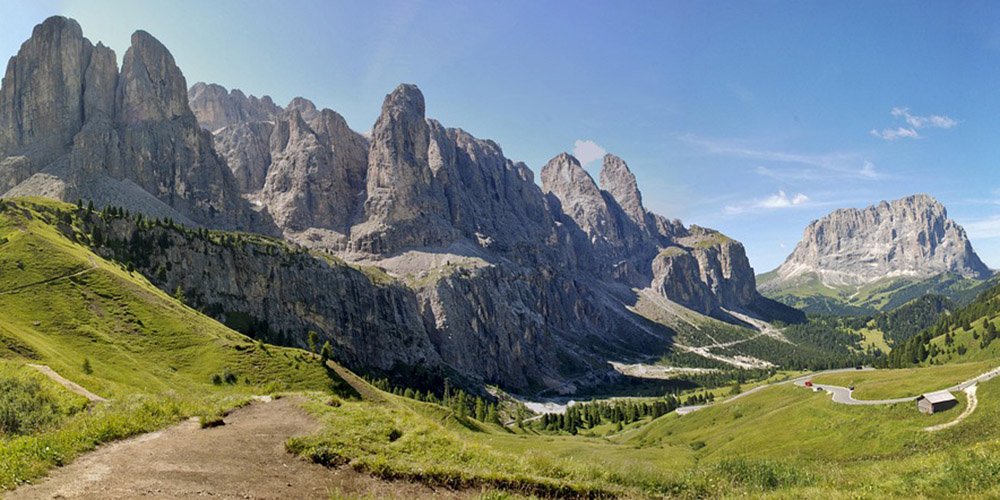What to Wear Hiking in Hot Weather: Our Best Tips
Hiking in hot weather can be a thrilling adventure, offering stunning views and a chance to connect with nature. However, the intense heat and glaring sun can quickly turn your trek into a test of endurance if you’re not dressed appropriately.
Choosing the right clothing for a hot-weather hike isn’t just about comfort—it’s about staying cool, protecting yourself from harmful UV rays, and avoiding conditions like dehydration and heat exhaustion. This guide will help you pick the best outfit to ensure a safe and enjoyable hike, no matter how high the temperatures climb.
Moisture-Wicking Base Layers
When hiking in hot weather, your base layers play a crucial role in keeping you dry and comfortable. The right fabric can make all the difference, as it helps regulate your body temperature by wicking away sweat and allowing it to evaporate.
Start with a lightweight, breathable shirt made from moisture-wicking materials like polyester or merino wool. These fabrics pull sweat away from your skin, preventing the uncomfortable stickiness that comes with cotton, which tends to hold onto moisture. A quick-drying shirt will also keep you cool as sweat evaporates, offering a refreshing effect even during intense activity.
For bottoms, consider whether you prefer the ventilation of shorts or the added protection of lightweight hiking pants. While shorts allow for maximum airflow, pants made from quick-drying synthetic fabrics can shield your legs from sunburn, scratches from brush, and pesky insects. Both options are effective, so your choice depends on the terrain and your personal comfort.
By choosing moisture-wicking clothing, you’ll avoid overheating and ensure that your body stays dry and regulated throughout your hike.

Sun Protection
Hiking under a blazing sun means prolonged exposure to harmful UV rays, making sun protection a critical part of your outfit. The best way to shield yourself is to choose clothing and accessories specifically designed to block or reflect the sun’s rays.
A wide-brimmed hat is your best defense against direct sunlight. It provides ample coverage for your face, neck, and ears, reducing the risk of sunburn in these sensitive areas. If you prefer a different style, a baseball cap paired with a neck gaiter or bandana can offer similar protection for your neck while still being lightweight and breathable.
Sunglasses are another essential item for hot-weather hiking. Look for pairs that block 100% of UVA and UVB rays to prevent damage to your eyes. Wrap-around styles or glasses with side shields are especially effective in reducing glare from all angles, which is particularly helpful in open, exposed environments like deserts or mountain trails.
For extra protection, consider wearing long-sleeve shirts and pants made from Ultraviolet Protection Factor (UPF) fabric. These garments are specially designed to block UV rays while remaining lightweight and breathable. They’re an excellent option for hikers who want to avoid sunburn without constantly reapplying sunscreen.
With the right sun-protective clothing and accessories, you’ll be able to enjoy the beauty of the trail without worrying about harmful UV exposure.
Footwear and Socks
When hiking in hot weather, your feet bear the brunt of the conditions, so choosing the right footwear and socks is essential. The goal is to keep your feet cool, dry, and blister-free, even after hours on the trail.
Start with lightweight, breathable hiking shoes or trail runners. These shoes are designed for ventilation, allowing air to circulate and preventing your feet from overheating. Look for shoes made with mesh panels or moisture-wicking linings to help manage sweat. Avoid heavy, waterproof hiking boots unless absolutely necessary, as they can trap heat and make your feet uncomfortably hot.
Equally important are the socks you choose. Opt for moisture-wicking socks made from synthetic blends or merino wool, as these materials help pull sweat away from your skin and dry quickly. Unlike cotton socks, which retain moisture and increase the risk of blisters, these specialized fabrics keep your feet dry and comfortable. For added protection, consider wearing socks with extra cushioning in high-friction areas to reduce the chances of irritation.
With the right combination of footwear and socks, you’ll keep your feet happy and ready to tackle any trail, even in the hottest conditions.

Accessories
Hot-weather hiking accessories can make a big difference in keeping you cool and comfortable. These small additions to your gear are simple yet effective in improving your overall experience.
A neck gaiter or bandana is one of the most versatile accessories you can bring. When worn around your neck, it protects your skin from sunburn. If soaked in water and draped over your neck or head, it provides a refreshing cooling effect that can help you combat the heat.
Another essential item is a hydration pack or easily accessible water bottles. Staying hydrated is critical in hot weather, and having your water readily available encourages frequent sips to prevent dehydration. Many hydration packs also feature insulated compartments, keeping your water cool even on scorching days.
Lightweight gloves can also be helpful if you’re hiking with trekking poles, as they protect your hands from sunburn and prevent blisters caused by friction. Finally, consider bringing a lightweight, packable sun umbrella for exposed trails where shade is scarce. While it may seem unconventional, an umbrella can provide immediate relief from direct sunlight during the hottest parts of your hike.
By incorporating these accessories into your hot-weather hiking setup, you’ll stay better protected and more comfortable throughout your journey.
Extra Useful Tips
Beyond specific clothing and gear choices, there are some general tips to keep in mind when preparing for a hot-weather hike. These practical strategies can make a big difference in your overall comfort and safety.
First, stick to light-colored clothing whenever possible. Light colors reflect sunlight, helping to keep your body cooler compared to darker shades, which absorb heat. Loose-fitting garments are another great choice as they promote better airflow, allowing sweat to evaporate more efficiently and keeping you cool.
Timing is also crucial when hiking in hot weather. Plan your hike for the cooler parts of the day, such as early morning or late afternoon, to avoid the intense midday heat. If your route includes shaded areas, take regular breaks to rest and cool down. During these stops, hydrate frequently and consider using a damp cloth or neck gaiter to cool your body temperature.
Lastly, don’t underestimate the power of proper sunscreen. Even if you’re wearing sun-protective clothing, exposed areas like your face, hands, and ankles are still vulnerable to sunburn. Apply a broad-spectrum sunscreen with an SPF of 30 or higher and reapply it every two hours or after sweating.
By combining the right clothing with smart preparation, you can minimize the effects of the heat and focus on enjoying your hike.
Conclusion
Hiking in hot weather can be a rewarding experience if you’re properly prepared. The right clothing and gear not only ensure comfort but also play a vital role in protecting you from the challenges of high temperatures, like sunburn, dehydration, and overheating. Opt for moisture-wicking base layers, lightweight and breathable fabrics, and accessories like hats, sunglasses, and hydration packs to stay cool and safe.
With thoughtful planning and attention to your needs, you can make the most of your hot-weather hike and fully enjoy the beauty of the trail. So pack wisely, stay hydrated, and don’t forget to savor the journey—every step of it!








